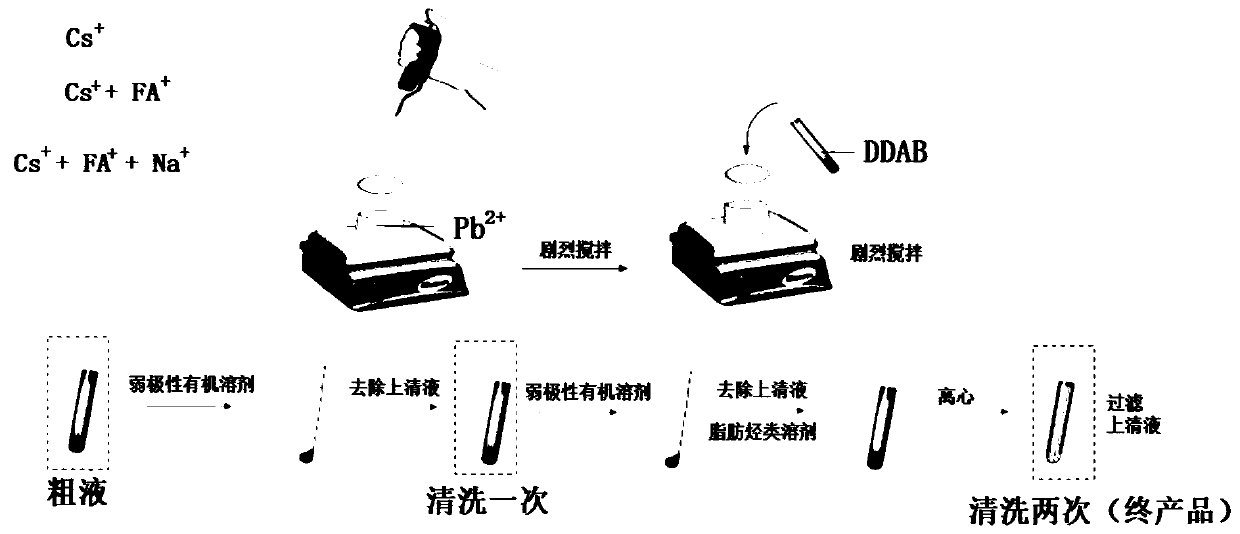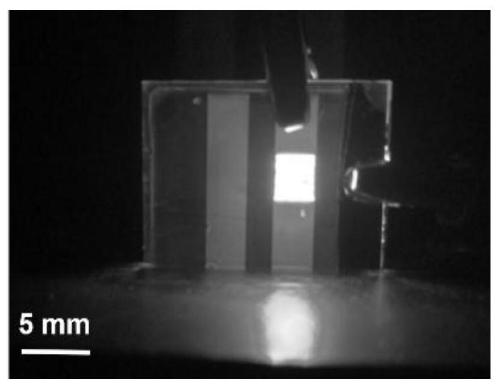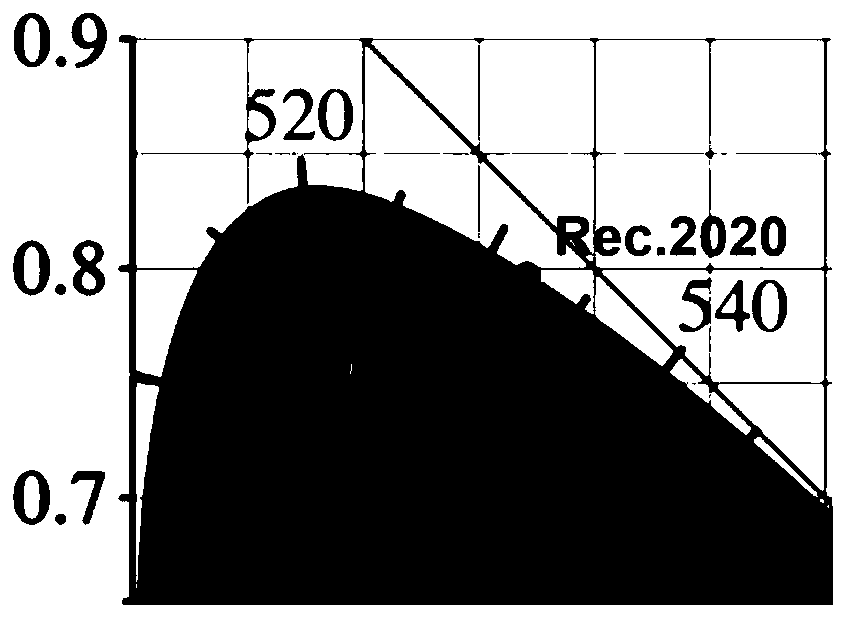Ligand regulation and control method of ABXnY3-n perovskite nanoparticles based on room temperature method and application
An abxny3-n, nanoparticle technology, used in the field of optoelectronic material preparation, can solve the problems of poor film formation flatness, low solubility, and poor system stability.
- Summary
- Abstract
- Description
- Claims
- Application Information
AI Technical Summary
Problems solved by technology
Method used
Image
Examples
Embodiment 1
[0083] The present embodiment provides a kind of Na without Na in the present invention + Synthesis of CsPbBr by Synergistic Regulation with Ultrashort Ligands 3 The preparation of nanoparticles and corresponding electroluminescent devices comprises the following steps:
[0084] 1. Synthesis of CsPbBr 3 Nanoparticles: Weigh 32.58 mg cesium carbonate (Cs 2 CO 3 ) was dissolved in 1 mL octanoic acid (OTAc), stirred and dissolved to obtain 0.1M Cs 2 CO 3 Cesium precursor. Weigh 458.75mg lead bromide (PbBr 2 ) and 1366.9mg of tetra-n-octylammonium bromide (TOAB) were dissolved in 25mL of toluene, stirred and dissolved to obtain Pb 2+ The concentration is 0.05M and PbBr 2 : TOAB = 1:2 molar ratio of the lead precursor. Weigh 12 mg of didodecyldimethylammonium bromide (DDAB) and dissolve it in 1 mL of toluene, stir and dissolve to obtain a precursor solution of 12 mg / mL DDAB of didodecyldimethylammonium bromide. Take 275 μL of cesium precursor and 280 μL of octanoic acid, ...
Embodiment 2
[0087] This example provides a method for synthesizing CsPbBr by using only ultrashort ligands to regulate ligands on the surface of nano-perovskite 3 Preparation of nanoparticles and corresponding electroluminescent devices.
[0088] The difference between this embodiment and embodiment 1 is only: in synthesizing CsPbBr 3 In the nanoparticle step, an additional step: Weigh 20.8 mg of the ultrashort ligand formamidine acetate (FA(Ac)) and dissolve it in 1 mL of octanoic acid (OTAc), stir and dissolve to obtain a 0.2 M formamidine acetate precursor. And the substance finally injected into the lead precursor solution was obtained by mixing 275 μL cesium precursor solution, 60 μL formamidine acetate and 220 μL octanoic acid, and the rest of the steps were the same.
Embodiment 3
[0090] This embodiment provides a method that only utilizes the metal ligand Na + CsPbBr obtained by adjusting ligands on the surface of nano perovskite 3 Synthesis of nanoparticles and fabrication of corresponding electroluminescent devices.
[0091] The difference between this embodiment and embodiment 1 is only: synthetic CsPbBr 3 In the nanoparticle step, increase step: weigh 10.6mg sodium carbonate (Na 2 CO 3 ) was dissolved in 1 mL octanoic acid (OTAc), stirred and dissolved to obtain 0.1M Na 2 CO 3 Sodium precursor. And the substance finally injected into the lead precursor solution was obtained by mixing 275 μL cesium precursor solution, 100 μL sodium carbonate solution and 180 μL octanoic acid, and the rest of the steps were the same.
PUM
| Property | Measurement | Unit |
|---|---|---|
| current efficiency | aaaaa | aaaaa |
| surface roughness | aaaaa | aaaaa |
| external quantum efficiency | aaaaa | aaaaa |
Abstract
Description
Claims
Application Information
 Login to View More
Login to View More - R&D
- Intellectual Property
- Life Sciences
- Materials
- Tech Scout
- Unparalleled Data Quality
- Higher Quality Content
- 60% Fewer Hallucinations
Browse by: Latest US Patents, China's latest patents, Technical Efficacy Thesaurus, Application Domain, Technology Topic, Popular Technical Reports.
© 2025 PatSnap. All rights reserved.Legal|Privacy policy|Modern Slavery Act Transparency Statement|Sitemap|About US| Contact US: help@patsnap.com



